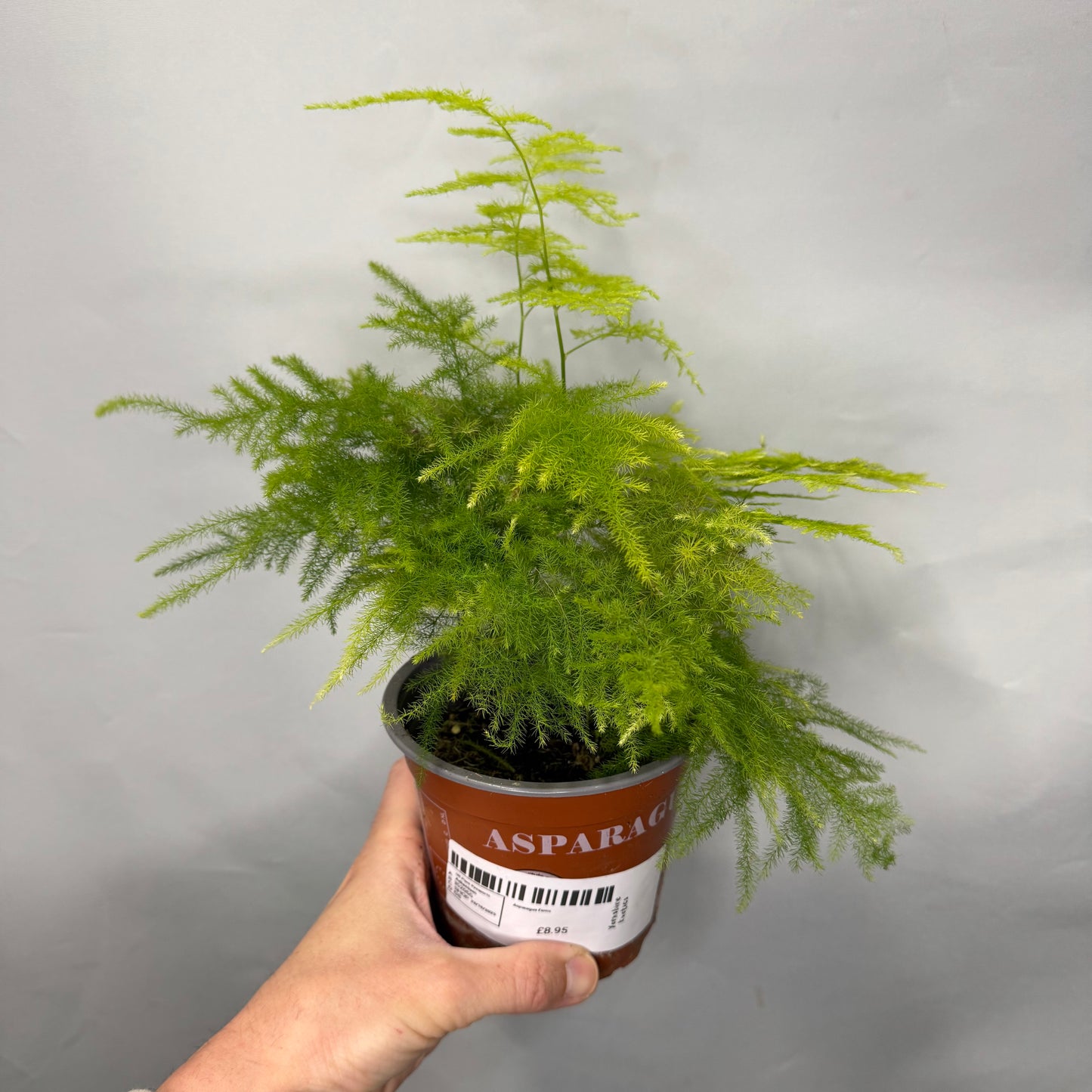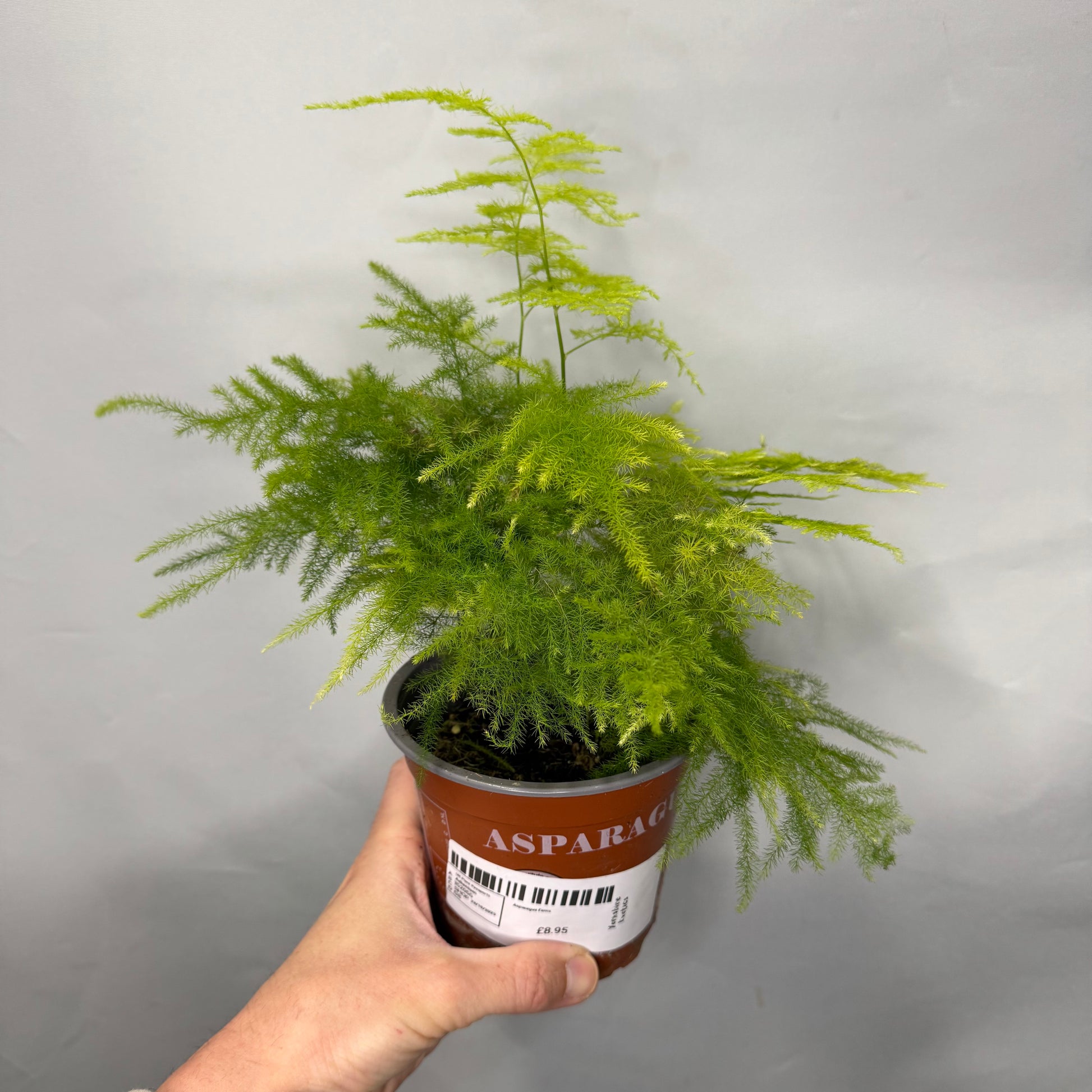My Store
Asparagus Ferns
Asparagus Ferns
Couldn't load pickup availability
Pot Size 12cm
Asparagus Fern – Lush Green Cascade 🌿🍃✨
The Asparagus Fern is a graceful and airy houseplant, prized for its soft, feathery foliage that creates a delicate, cascading effect. Despite its name, it isn’t a true fern — but its fine, needle-like leaves bring the same lush, tropical charm to any space. Perfect for hanging baskets or tabletops, it adds texture and freshness to your indoor garden.
Key Features:
✔ Soft, delicate fronds that create a full, feathery look
✔ Fast-growing and ideal for hanging baskets or pots
✔ Excellent air-purifying plant for a fresher home
✔ Low-maintenance and resilient once established
✔ Adds a light, elegant touch to modern interiors
Care Instructions:
Light: Thrives in bright, indirect light; tolerates some morning sun but avoid harsh midday rays
Watering: Keep the soil lightly moist; water when the top 2–3 cm feels dry — avoid letting it dry out completely
Humidity: Prefers moderate to high humidity; mist regularly or place near other plants
Soil: Use a rich, well-draining potting mix
Feeding: Fertilise every 4–6 weeks in spring and summer with a balanced houseplant feed
Temperature: Maintain between 18–26°C; protect from cold drafts and sudden temperature drops
Growth: Can reach up to 60 cm tall and wide indoors
🌿 Tip: Trim any yellowing fronds to keep your Asparagus Fern looking soft, fresh, and full — it will quickly reward you with new, vibrant growth.


